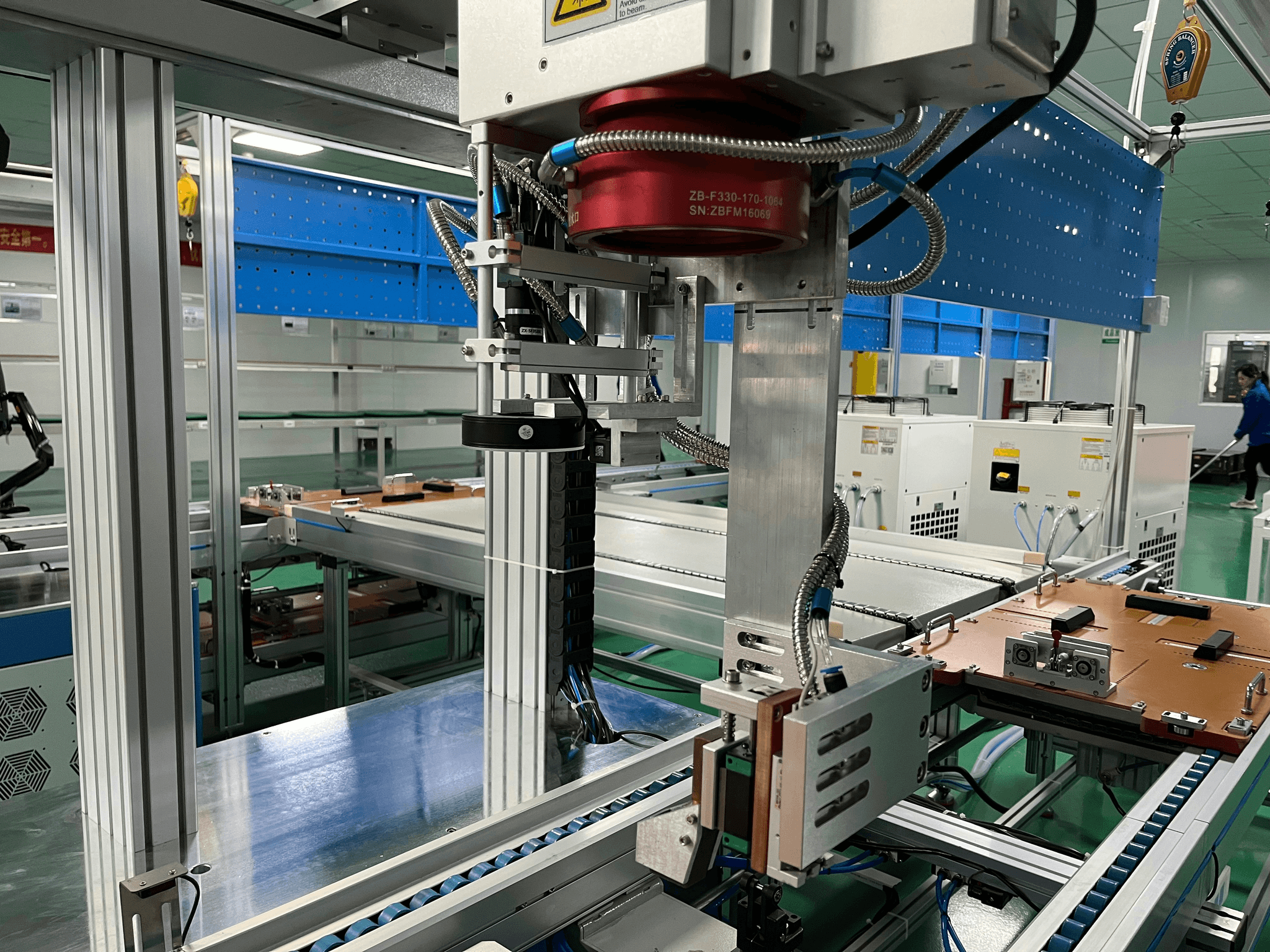Introduction
In the fast-paced world of manufacturing, understanding quality control is not just a luxury; it's a necessity. Quality control in production ensures that products meet specific standards and specifications, ultimately affecting customer satisfaction and brand reputation. As competition intensifies, manufacturers must prioritize effective strategies to enhance their production management processes, ensuring consistent manufacturing quality.
Understanding Quality Control in Manufacturing
Quality control refers to the systematic process of monitoring and evaluating various aspects of production to maintain high standards. This involves not only inspecting finished products but also ensuring that every stage of the manufacturing process adheres to established guidelines. By grasping the nuances of how to improve quality control in production, organizations can identify weaknesses and implement corrective measures proactively.
Importance of Quality Control Strategies
Quality control strategies are crucial for minimizing defects and maximizing efficiency in manufacturing operations. Implementing these strategies leads to reduced waste, lower costs, and improved product reliability—all essential components for thriving in today’s market. Companies that focus on how to improve quality control in production are better positioned to adapt quickly to challenges while maintaining high standards of manufacturing quality.
Overview of Quality Control Tools
A variety of tools are available for manufacturers looking to enhance their quality control efforts effectively. From statistical process control software that analyzes data trends to automation technologies that streamline inspections, these tools offer invaluable support for production management teams. Understanding how these resources fit into a broader strategy can empower organizations to make informed decisions about improving their overall manufacturing quality.
Essential Strategies to Enhance Quality Control

In the ever-evolving landscape of manufacturing quality, enhancing quality control is not just a goal; it's a necessity. To improve quality control in production, companies must adopt strategic approaches that streamline processes and ensure consistent output. This section delves into three essential strategies that can significantly boost manufacturing quality and efficiency.
Implementing Lean Manufacturing Principles
Lean manufacturing principles focus on minimizing waste while maximizing productivity, making them a cornerstone for improving quality control in production. By adopting these principles, organizations can identify non-value-adding activities and eliminate inefficiencies that may compromise product quality. Ultimately, this leads to smoother operations and enhanced manufacturing quality across the board.
For example, by implementing 5S (Sort, Set in order, Shine, Standardize, Sustain), teams can organize their workspaces effectively and maintain high standards of cleanliness and orderliness. This not only improves safety but also reduces the chances of defects during production processes. In essence, lean principles empower teams to take ownership of their work environment while fostering a culture of continuous improvement.
The Role of Six Sigma in Production Management
Six Sigma is another powerful methodology for how to improve quality control in production by focusing on data-driven decision-making to reduce variability and defects. By employing statistical tools and techniques, organizations can analyze processes more effectively and implement solutions that drive consistency in manufacturing quality. This disciplined approach ensures that every aspect of production aligns with customer expectations.
Moreover, Six Sigma encourages cross-functional collaboration among teams to identify root causes of issues rather than merely addressing symptoms. Through its structured framework—DMAIC (Define, Measure, Analyze, Improve, Control)—companies can continuously refine their processes and achieve sustainable results over time. In doing so, they not only enhance product reliability but also boost overall customer satisfaction.
Real-Time Quality Monitoring Techniques
In today's fast-paced manufacturing environment, real-time quality monitoring techniques are crucial for maintaining high standards of production management and ensuring immediate corrective actions when necessary. These techniques leverage advanced technologies such as IoT sensors and AI-driven analytics to track key performance indicators continuously throughout the production process. As a result, manufacturers can swiftly identify deviations from established standards before they escalate into significant issues.
This proactive approach allows teams to make data-informed decisions on-the-fly instead of waiting for periodic inspections or audits—essentially transforming how companies think about quality assurance in their operations. Additionally, real-time monitoring fosters accountability among employees as they see firsthand how their actions impact overall product integrity. By integrating these technologies into daily practices, businesses enhance their ability to improve quality control in production while staying ahead of potential challenges.
Key Tools for Quality Control in Manufacturing

In the realm of manufacturing quality, leveraging the right tools can make all the difference. These tools not only streamline processes but also ensure that production management is efficient and effective. By integrating advanced technologies and methodologies, manufacturers can significantly enhance their quality control measures.
Utilizing Statistical Process Control Software
Statistical Process Control (SPC) software is a game-changer for manufacturers aiming to improve quality control in production. This software allows businesses to monitor and control processes through real-time data analysis, detecting variations that could lead to defects before they happen. By implementing SPC, companies can achieve higher consistency in their products while reducing waste—an essential aspect of effective production management.
Furthermore, using SPC enables teams to visualize data trends through control charts, making it easier to identify areas needing improvement. With the ability to analyze historical data, manufacturers can fine-tune their processes based on past performance—a crucial step in maintaining high manufacturing quality standards. Ultimately, embracing statistical process control software equips organizations with the insights necessary for proactive decision-making.
The Impact of Automation and AI on Quality
Automation and artificial intelligence (AI) are revolutionizing how we approach quality control in manufacturing environments. These technologies facilitate real-time monitoring and analysis of production lines, allowing for immediate adjustments when deviations occur—essentially a digital safety net for maintaining high-quality standards. By automating repetitive tasks associated with quality checks, human resources can be redirected towards more strategic roles that focus on continuous improvement.
Moreover, AI algorithms can predict potential failures or defects by analyzing vast amounts of data from various stages of production management. This predictive capability helps businesses stay one step ahead of issues that could compromise manufacturing quality. As automation continues to evolve, its integration into quality control processes will likely become even more sophisticated and essential.
Effective Use of Quality Management Systems
Quality Management Systems (QMS) serve as the backbone for any successful strategy aimed at how to improve quality control in production settings. A robust QMS not only standardizes procedures but also provides a framework for continuous assessment and enhancement of operations related to manufacturing quality. By establishing clear protocols within a QMS, organizations ensure compliance with industry standards while fostering a culture centered around excellence.
Implementing an effective QMS involves training employees on its functionalities so they understand their roles within this system—after all, people are key players in achieving consistent results! Additionally, regular reviews and updates of the QMS help organizations adapt swiftly to new challenges or changes in regulations affecting production management practices. In essence, a well-structured QMS empowers companies to maintain high-quality outputs consistently over time.
Best Practices for Quality Assurance

Quality assurance is the backbone of successful production management and manufacturing quality. By implementing best practices, organizations can significantly improve quality control in production, ensuring that products meet or exceed customer expectations. This section explores three essential practices: conducting regular quality audits, training employees for quality awareness, and establishing clear quality metrics.
Conducting Regular Quality Audits
Regular quality audits are vital in maintaining high standards within production management. These audits help identify areas where processes may falter, allowing teams to address issues before they escalate into larger problems. By systematically evaluating manufacturing quality through audits, companies can refine their operations and enhance overall performance.
Incorporating a schedule for these audits ensures that they become an integral part of the workflow rather than an afterthought. Not only do regular audits provide insights into compliance with established standards, but they also foster a culture of accountability among employees. This proactive approach is one of the most effective ways to improve quality control in production.
Training Employees for Quality Awareness
Investing in employee training is crucial for fostering a culture of quality awareness across all levels of an organization. When workers understand the importance of their roles in maintaining manufacturing quality, they are more likely to take ownership of their tasks and contribute positively to overall outcomes. Training programs should emphasize not just the how but also the why behind processes to instill a sense of purpose.
Moreover, ongoing training helps keep staff updated on new technologies and methodologies that can further enhance production management strategies. Engaging employees through workshops or hands-on sessions allows them to apply what they've learned directly to their work environment. Ultimately, well-trained employees are empowered to identify potential issues early on—an essential factor in improving quality control in production.
Establishing Clear Quality Metrics
Clear and measurable metrics are foundational for assessing manufacturing quality effectively. By defining specific criteria against which products will be evaluated, organizations can gain insights into their performance over time and identify trends or areas needing improvement. Metrics should be realistic yet challenging enough to motivate teams toward excellence.
Additionally, involving employees in the development of these metrics encourages buy-in and fosters a collaborative spirit within teams focused on achieving common goals related to production management. Regularly reviewing these metrics allows companies to adapt quickly when challenges arise while celebrating successes along the way as part of continuous improvement efforts. Establishing clear metrics is ultimately one more step toward knowing how to improve quality control in production.
Collaborating with Third-Party Inspectors

In the quest for manufacturing quality, collaboration with third-party inspectors can be a game changer. These external partners bring expertise and an unbiased perspective, which is crucial for identifying areas where quality control can be improved in production. By leveraging their specialized knowledge, manufacturers can enhance their overall production management strategies.
Benefits of Partnering with China Inspection Pro
One of the standout benefits of partnering with China Inspection Pro is their extensive experience in navigating the complexities of global supply chains. Their familiarity with local regulations and standards allows businesses to align their manufacturing quality goals with compliance requirements seamlessly. Moreover, this partnership can lead to cost savings by minimizing defects and ensuring that products meet specifications before they reach the market.
Additionally, working with China Inspection Pro provides access to advanced inspection technologies that many companies may not have in-house. This capability enables manufacturers to implement cutting-edge solutions that significantly enhance how to improve quality control in production processes. Ultimately, such partnerships foster a culture of continuous improvement within organizations.
How Third-Party Inspections Help Quality Control
Third-party inspections serve as a critical checkpoint in the manufacturing process, ensuring that products meet predefined quality standards before shipment. By conducting thorough evaluations at various stages—from raw materials to finished products—these inspections help identify issues early on, preventing costly rework or recalls later on. This proactive approach is essential for maintaining high manufacturing quality and instilling confidence among customers.
Moreover, third-party inspectors provide objective assessments that internal teams may overlook due to familiarity bias or pressure from management goals. Their fresh eyes can uncover hidden inefficiencies and suggest improvements tailored specifically for each production environment. In this way, companies learn how to improve quality control in production through actionable insights derived from expert analysis.
Building Relationships with Quality Assurance Partners
Building strong relationships with quality assurance partners like China Inspection Pro goes beyond mere transactional interactions; it’s about cultivating trust and open communication channels over time. Engaging regularly allows both parties to align on expectations and share valuable feedback regarding performance metrics related to manufacturing quality initiatives. Such collaboration fosters a sense of shared responsibility for product excellence.
Additionally, nurturing these relationships encourages knowledge sharing between inspectors and internal teams—an exchange that can lead to innovative solutions for persistent challenges in production management practices. Regularly scheduled meetings or training sessions help reinforce this bond while simultaneously equipping employees with tools on how to improve quality control in production settings effectively. Ultimately, these partnerships become pivotal assets as organizations strive toward achieving consistent excellence.
Continuous Improvement for Production Management
In the fast-paced world of manufacturing, continuous improvement is essential for maintaining high standards of quality control. This iterative process not only enhances production management but also ensures that manufacturing quality remains at the forefront. By fostering a culture of ongoing development, organizations can effectively address challenges and seize opportunities for innovation.
The Importance of Feedback Loops
Feedback loops are the lifeblood of effective quality control in production. They provide critical insights into processes, allowing teams to identify areas needing improvement and to celebrate successes. By systematically gathering feedback from employees, customers, and stakeholders, manufacturers can fine-tune their practices and ensure that they are always striving for excellence in production management.
Establishing robust feedback mechanisms encourages open communication, which is vital for addressing potential quality issues before they escalate. For instance, regular meetings or digital platforms can facilitate discussions about manufacturing quality and highlight areas where improvements can be made. Ultimately, these loops create a dynamic environment where everyone feels empowered to contribute to how to improve quality control in production.
Strategies for Adapting to Quality Challenges
Adapting to quality challenges requires a proactive approach grounded in data-driven decision-making. Implementing strategies such as root cause analysis helps identify underlying problems affecting manufacturing quality and allows teams to develop targeted solutions. Furthermore, embracing agile methodologies enables organizations to pivot quickly when faced with unexpected obstacles or changing market demands.
Another effective strategy involves cross-training employees across various roles within production management; this not only enhances skill sets but also fosters a more flexible workforce capable of responding swiftly to changing conditions. Additionally, leveraging technology—such as real-time monitoring systems—can provide invaluable insights into operational performance and highlight areas where adjustments are necessary for improving quality control in production processes.
By remaining vigilant and adaptable, manufacturers can navigate through challenges while continuously enhancing their overall operations and maintaining high-quality standards.
Success Stories of Effective Quality Control
Numerous companies have successfully transformed their operations through innovative approaches to quality control in production management. For example, a well-known automotive manufacturer implemented lean principles alongside Six Sigma methodologies which led them not only to reduce waste significantly but also improve overall product reliability—showing how strategic adaptations can yield impressive results in manufacturing quality.
Another success story comes from a consumer electronics company that embraced automation coupled with rigorous training programs for its workforce; this combination allowed them to streamline processes while ensuring that staff were equipped with the skills needed for maintaining high-quality output consistently. These examples illustrate that when organizations commit fully to improving their practices and invest in both people and technology effectively, they can achieve remarkable advancements in how they manage production while ensuring top-notch product standards.
In conclusion, continuous improvement is not just a buzzword; it’s an essential component of successful production management strategies aimed at enhancing manufacturing quality across the board.
Conclusion

In the ever-evolving landscape of manufacturing, the importance of quality control cannot be overstated. It serves as the backbone of production management, ensuring that products not only meet customer expectations but also comply with industry standards. By implementing effective quality control strategies, manufacturers can significantly enhance their operational efficiency and product reliability.
Recap of Quality Control Importance
Quality control is essential for maintaining high manufacturing quality and fostering customer trust. It minimizes defects and waste while optimizing production processes, ultimately leading to cost savings and increased profitability. Understanding how to improve quality control in production is crucial for businesses aiming to thrive in a competitive market.
Future Trends in Manufacturing Quality
Looking ahead, several trends are reshaping the landscape of manufacturing quality. Advanced technologies such as AI and machine learning are paving the way for smarter quality control systems that can predict issues before they arise. Additionally, sustainability practices are becoming integral to quality management, emphasizing not just product excellence but also environmental responsibility within production management.
Steps to Get Started with Quality Control Strategies
To embark on a journey toward improved quality control in production, manufacturers should first assess their current processes and identify areas for enhancement. Training employees on best practices and utilizing effective tools like Statistical Process Control software can lay a solid foundation for ongoing improvement efforts. Finally, fostering a culture of continuous feedback will empower teams to adapt quickly to challenges and maintain high manufacturing quality over time.
